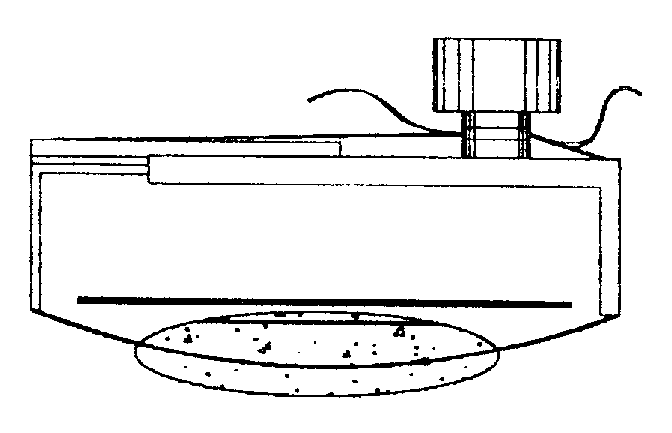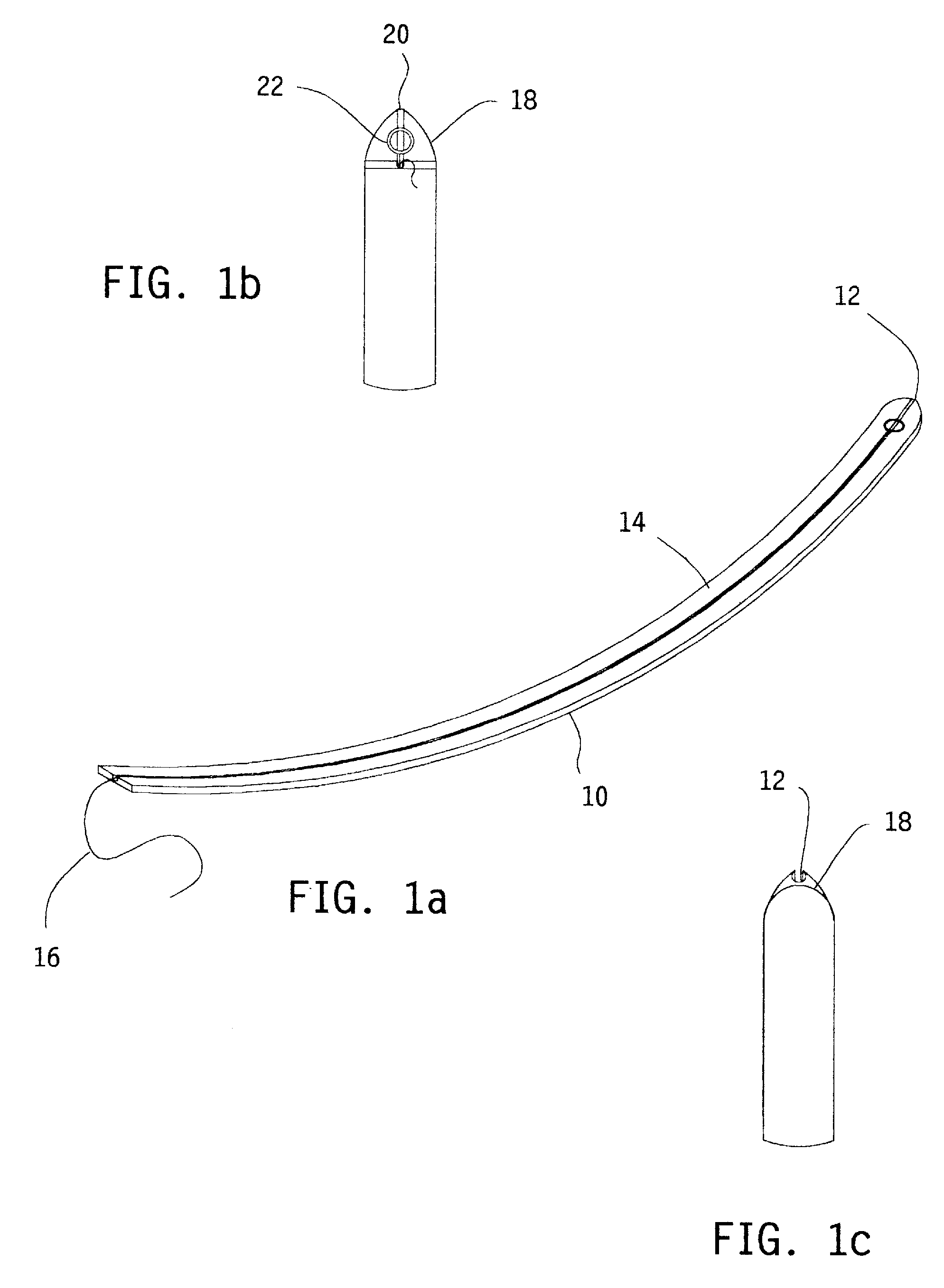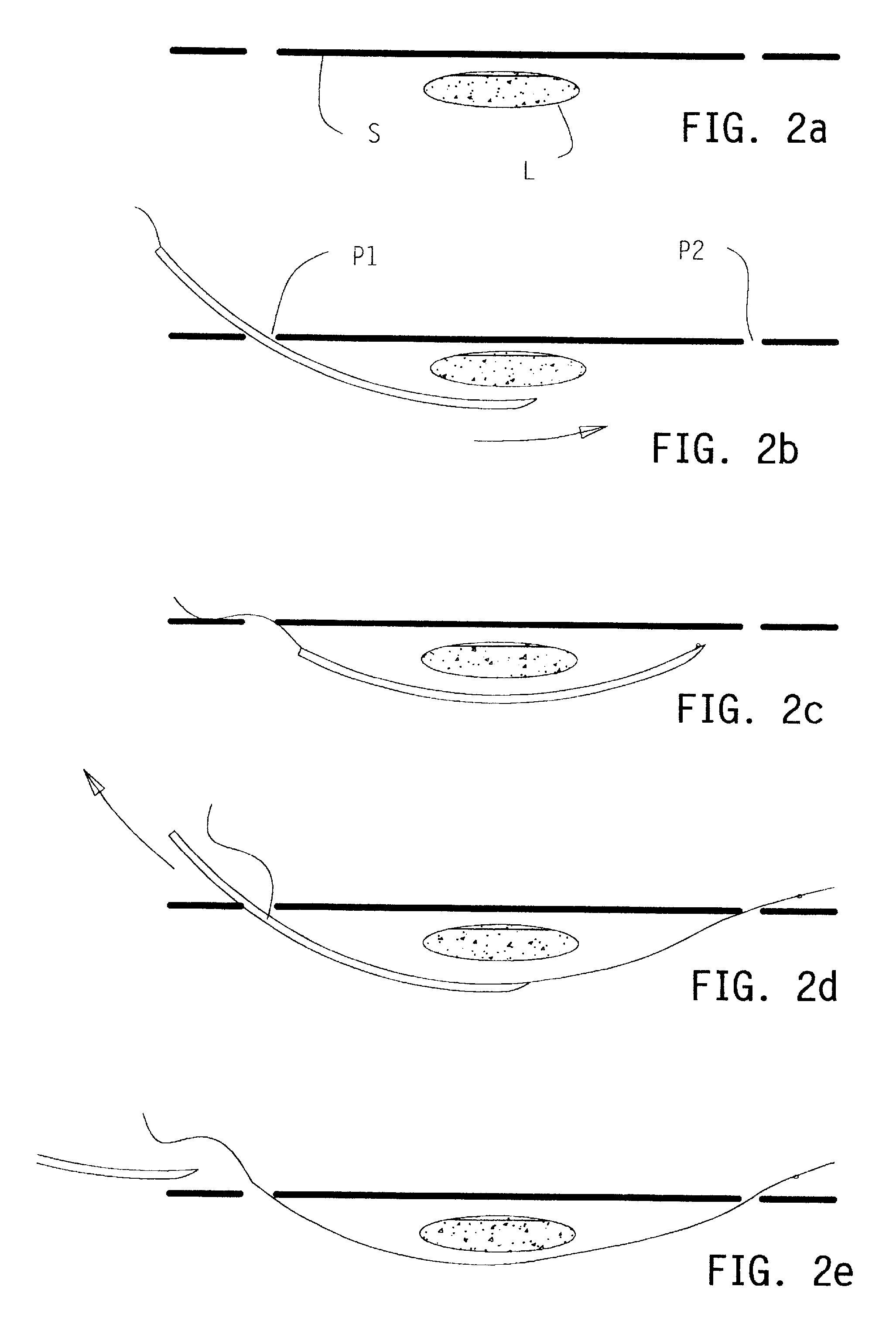Flexible Wire Transection of the Transverse Carpal Ligament
a transverse carpal ligament and flexible wire technology, applied in the field of surgery, can solve the problems of shortening the convalescent period, difficult and sometimes impossible to pass all the equipment needed to perform the release surgery, and not being able to accommodate, etc., to achieve the effect of small cross-sectional diameter, easy passing, and necessitating larger cross-sectional areas
- Summary
- Abstract
- Description
- Claims
- Application Information
AI Technical Summary
Benefits of technology
Problems solved by technology
Method used
Image
Examples
Embodiment Construction
[0029]FIGS. 1a-1c show a curved wire passer 10, which has a slot 12 running lengthwise in one of its broad faces 14, for receiving and holding a cutting wire 16. While a flat spatula-shape is presently preferred, the passer could alternatively be tubular, to allow placement over an endoscope.
[0030] The passer has a large-radius curvature corresponding to the intended path of the wire beneath the ligament. It may be rigid, or flexible but with enough rigidity so that it can be pushed through the carpal tunnel. The nose 18 is rounded, tapering to a radiused tip 20. A clamp or notch 22 (FIG. 1b) at the nose holds the distal end of the wire initially.
[0031] The wire 16 may be metallic, or formed from another suitable material having sufficiently high tensile strength and hardness to cut through the transverse carpal ligament. It may have a uniform circular cross-section, or it may be formed with serrations, corrugations or other irregularities to improve its cutting action. The wire i...
PUM
 Login to View More
Login to View More Abstract
Description
Claims
Application Information
 Login to View More
Login to View More - R&D
- Intellectual Property
- Life Sciences
- Materials
- Tech Scout
- Unparalleled Data Quality
- Higher Quality Content
- 60% Fewer Hallucinations
Browse by: Latest US Patents, China's latest patents, Technical Efficacy Thesaurus, Application Domain, Technology Topic, Popular Technical Reports.
© 2025 PatSnap. All rights reserved.Legal|Privacy policy|Modern Slavery Act Transparency Statement|Sitemap|About US| Contact US: help@patsnap.com



